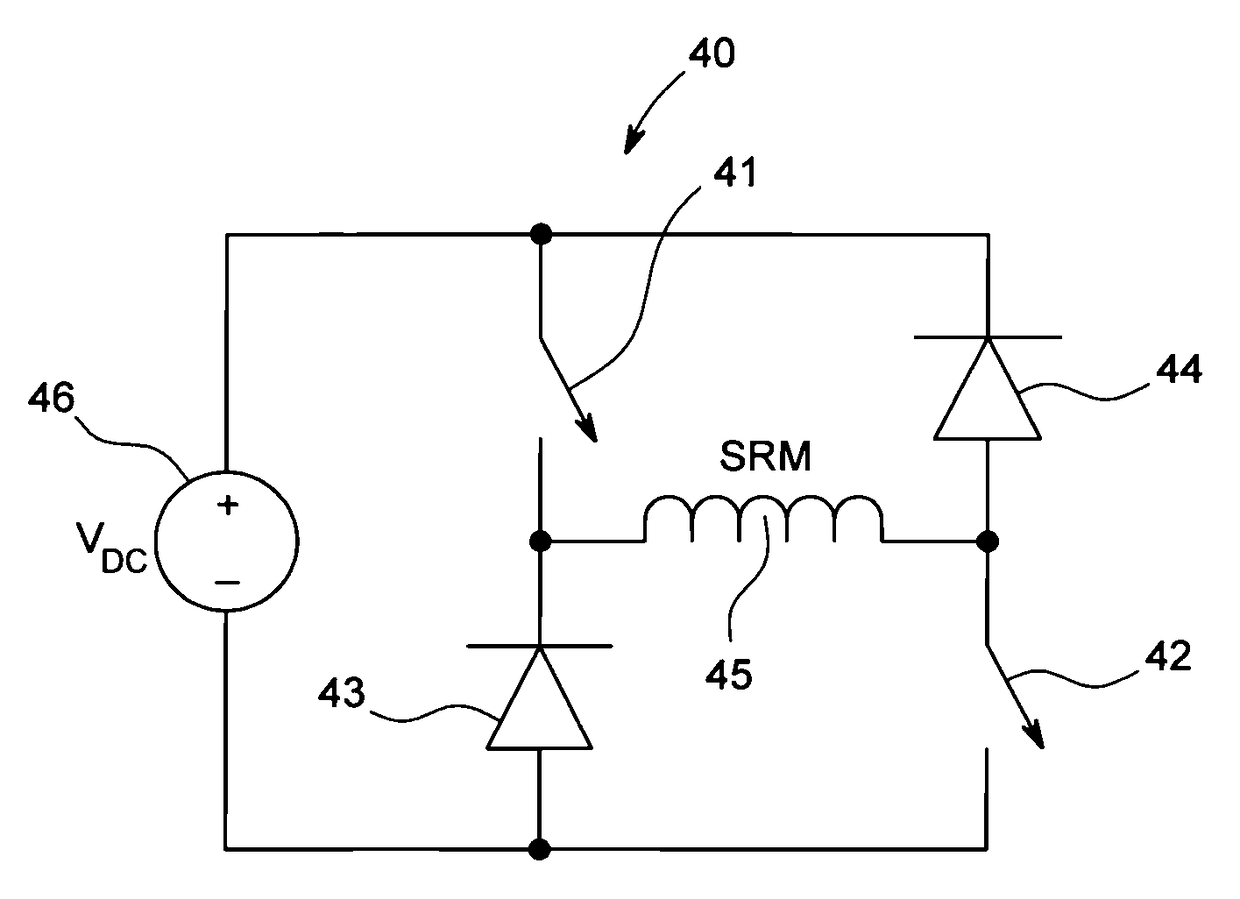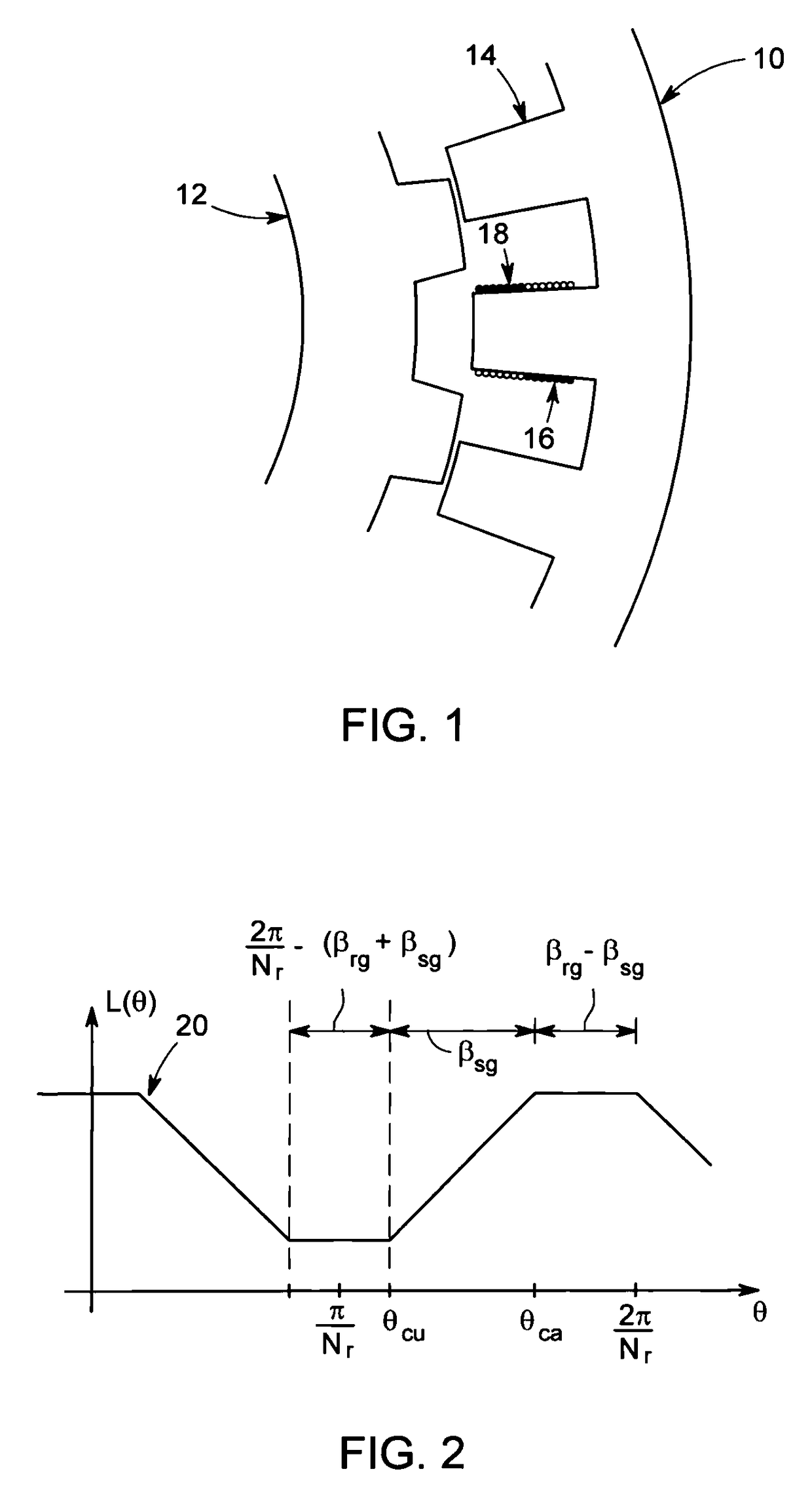Control method for reducing torque ripple in an electrical machine
a control method and technology for electrical machines, applied in the field of electric machines, can solve the problems of torque ripple, complicated control of electrical machines, limiting factors in the application of electrical machines, etc., and achieve the effects of reducing torque ripple, simple current regulation algorithm, and convenient use of standard inverter topology
- Summary
- Abstract
- Description
- Claims
- Application Information
AI Technical Summary
Benefits of technology
Problems solved by technology
Method used
Image
Examples
Embodiment Construction
[0022]FIG. 1 is an axial view illustrating one portion of stator and rotor laminations 10, 12 for an electrical machine, according to one embodiment. The stator laminations 10 comprise a plurality of teeth 14. One or more short-pitch, concentrated windings are wound around each of the plurality of stator teeth 14. The short-pitch, concentrated windings may include an AC winding 16 and a DC winding 18, according to one embodiment. The term “short pitch, concentrated” as used herein means that each stator winding wraps around only one stator tooth 14. The rotor laminations 12 are devoid of windings or permanent magnets and the rotor is comprised of salient magnetic poles. The number of salient poles on the stator and rotor will necessarily be different to support torque production at all rotor positions. The stator and rotor poles are symmetrically displaced in space. The AC winding 16 on each stator tooth is associated with a particular phase winding. The magnetic polarity of the AC ...
PUM
 Login to View More
Login to View More Abstract
Description
Claims
Application Information
 Login to View More
Login to View More - R&D
- Intellectual Property
- Life Sciences
- Materials
- Tech Scout
- Unparalleled Data Quality
- Higher Quality Content
- 60% Fewer Hallucinations
Browse by: Latest US Patents, China's latest patents, Technical Efficacy Thesaurus, Application Domain, Technology Topic, Popular Technical Reports.
© 2025 PatSnap. All rights reserved.Legal|Privacy policy|Modern Slavery Act Transparency Statement|Sitemap|About US| Contact US: help@patsnap.com



